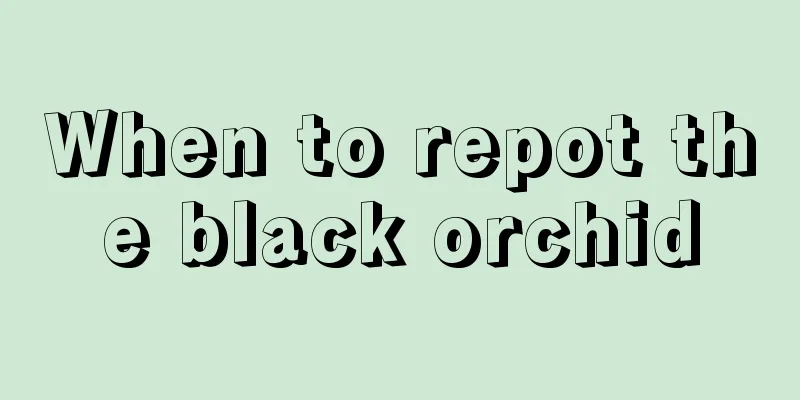Will succulents be frozen to death (Will succulents be frozen to death outdoors in winter)

|
Under the premise that the pot soil is dry, most succulents can tolerate low temperatures around 0°C: There are tens of thousands of succulent plants, and their cold tolerance varies. As long as the temperature is low enough, succulents will freeze to death in a matter of minutes. Whether they can freeze to death depends on the temperature. Generally speaking, the safe wintering temperature for succulents is at least above 0℃, and some of them that are grown outdoors are relatively hardy. Succulent plants with larger plants can even withstand temperatures as low as -10°C, but if they are potted succulents, it is best to keep the temperature above 10°C . Among them, the thin-leaf varieties and the varieties with fuzzy leaves are relatively less cold-resistant, such as: Master, Tang Seal, Sunset, Golden Branches and Jade Leaves, Dance of Elegant Music, Bear Paw, Moon Rabbit Ears, Silver Moon, etc. Succulents of the Cactaceae family and the Desert Rose genus are tropical plants and are not cold-resistant. Most succulents will not suffer frostbite as long as the soil in the pots is kept dry in winter and they can receive an appropriate amount of scattered sunlight and in areas where the ambient temperature does not drop below zero for a long time. It can even grow normally in the coastal areas of Guangdong, Guangxi and Fujian where there is indoor heating and the winter is relatively warm. However, some types of succulents are very frost-resistant and there is almost no harm in keeping them outdoors in winter, while some are not frost-resistant. Doing these in low-temperature areas in winter will help succulents survive the winter smoothly: In the cold northern regions and the humid and cold Jiangnan region, when the ambient temperature drops to around 5℃, the outdoor culture should be stopped to avoid being exposed to rain, and the plants should be placed in a relatively warm and dry environment to spend the winter. When the ambient temperature drops below 10℃ in winter, the growth of succulents is basically stagnant. Not only do they require less water, but the water in the potting soil evaporates very slowly after watering. Therefore, watering should be done in moderation. Cutting off water lightly or just maintaining the moisture for survival will help prevent fading and excessive growth, and will also help the plant survive the winter smoothly. Reasonable use of heating equipment. In the northern heating environment, moving indoors is a natural greenhouse environment. In the southern non-heating areas, move to relatively warm places such as balconies and corridors to avoid rain and night frost. Flower lovers who have the conditions can also use plant fill lights for a short period of time, which can increase the light and slightly increase the ambient temperature. Keep diffuse light as much as possible. In most cold regions, low temperatures last for 2-3 months in winter, and succulents will inevitably grow too long and fade. Therefore, even if it is brought indoors or onto a balcony, it should still be placed where it can receive scattered sunlight, which can slow down its fading and growth. |
<<: Can daffodil seeds be planted (how to save seeds from daffodils after they have bloomed)
Recommend
What soil is best for growing Christmas cactus
1. Requirements for soil (1) The soil should be l...
The role of snow lotus
The role of snow lotus in beautifying the environ...
Do orchids like carrion? Can carrion be used as fertilizer?
1. Do you like it? Orchids love carrion. Because ...
Steps for hydroponic cultivation of green imperial philodendron
Growth habit It likes warm, humid and semi-green ...
Can plumeria be hydroponically cultivated? How to cultivate roots through hydroponics?
Can plumeria be grown hydroponically? Frangipani ...
Why do the buds of anthurium turn black?
1. Metabolism Reason: When it grows to a certain ...
Can ranunculus be grown indoors?
1. Can be planted Although anemone is poisonous, ...
How to breed the Queen of the Cliff
Cliff Queen Growing Conditions The Queen of the C...
How to grow white orchid indoors
1. Soil When growing white orchids indoors, you n...
How to grow lantern flower
The lantern flower , scientifically known as Fuch...
How to plant magnolia seeds
Pay attention when the seeds are about to mature,...
How to manage hydrangeas in winter?
Hydrangea has plump, large and beautiful flowers ...
Can a seedling of Cymbidium orchid survive? Should I plant it shallowly or deeply?
1. Can a single seedling of Cymbidium orchid surv...
Methods and steps for growing spinach on the balcony What should you pay attention to when growing spinach on the balcony
Many vegetables are ripe in spring. They are deli...
What is the best month to plant corn?
When is corn planted? Corn is usually planted in ...









